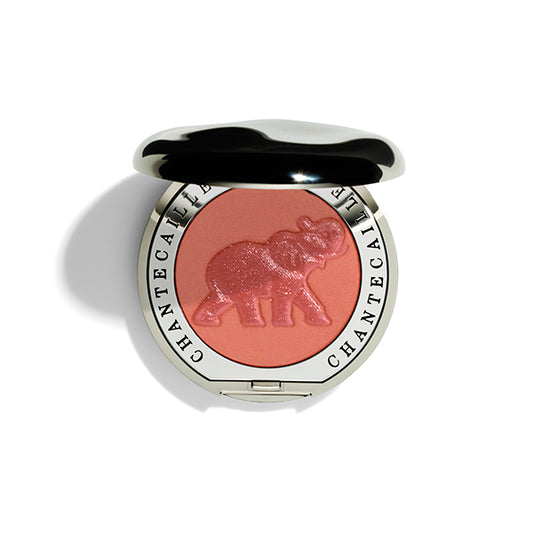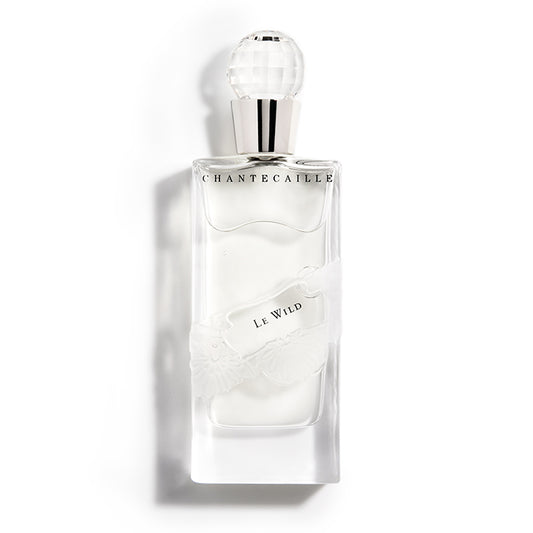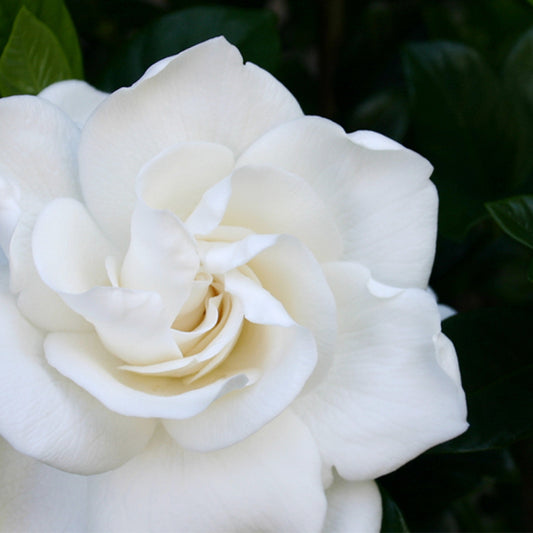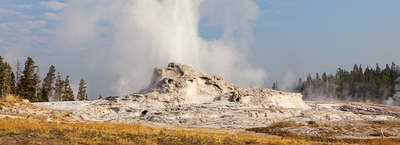
Ashley is invited to join Lek’s elephant herd at the elephant sanctuary. All photos courtesy of Love & Bananas movie
Ashley Bell’s Amazing Elephant Rescue
Ashley Bell's directorial debut is the emotional documentary, “Love & Bananas: An Elephant Story.” The film depicts the rescue of a partially blind, 70-year-old Asian elephant and her 500-mile journey across Thailand to freedom.
Bell's work in horror movies like The Last Exorcism and Carnage Park proves the old adage about the eyes being the windows to the soul—her large brown eyes visibly register reactions from curiosity to shock. In “Love & Bananas,” those expressive, empathic eyes guide us on a very different sort of emotional journey, from the abuses of a Thai elephant trekking camp, where aging elephant Noi Na is liberated by a rescue team led by renowned elephant conservationist Lek Chailert. She stopped by our office to chat about it.
This was not a small undertaking! How did this whole project come about?
I’d known about Lek’s work for about 10 years, largely because I was raised in L.A. by vegetarian parents who are environmentally aware. I’d heard her described as this five-foot-tall rock star of elephant conservation who travels across Southeast Asia rescuing elephants. A close family friend owns the Cambodia Wildlife Sanctuary, and they had been looking for years to rescue two elephants. When the opportunity arose to go and see Lek rescue and release the two Asian elephants onto the sanctuary, I said, I have to film that! That’s a short story. It turned out it was anything but.
Tell us a little more about Lek Chailert.
Sangdeaun “Lek” Chailert was born in a small hill tribe village of Baan Lao, in Thailand. Lek came from a family that works in the trekking business [trekking camps are a tourist attraction across Southeast Asia]. Her grandfather, a shaman healer, allowed Lek to be part of his work and participate in healing animals and humans. As a teenager, she looked into the eye of an injured elephant and devoted her life to saving them. As a result, she was disowned by her family. Lek runs Save Elephant Foundation and Elephant Nature Park, the number one humane elephant sanctuary in Chiang Mai. In 2010, Secretary of State Hillary Rodham Clinton honored her as one of six Women Heroes of Global Conservation; she was named one of Time magazine’s “Heroes of Asia” for her work in conservation and the Ford Foundation’s “Hero of the Planet.”

Elephant activist Lek Chailert; Noi Na at the sanctuary, awaiting her release into the wild.
Wow, so inspiring. Can you tell us how the plight of the Asian elephant, Lek’s focus, differs from that of the African elephant, which most people know more about?
There are around 450,000 African elephants in the wild, but only 40 to 45,000 Asian elephants—and a third of those are in captivity. Asian elephants are the more endangered of the two. Human-elephant conflict is massive in both places—African elephants are considered pests because they’ll go in and destroy a farmer’s crops, and in Africa there’s more poaching for tusks. With Asian elephants, on the other hand, human-animal conflict is due to agricultural growth and urban expansion. Asian elephants are also so much smaller. Their shoulders are kind of rounded—they’re not as studly as African elephants—while their ears are smaller and their personality is not as outgoing. Because of this, Asian elephants are mistakenly considered to be the more docile of the two. And so Asian elephants are used for zoos and circuses and for riding in trekking camps across southeast Asia. They are also used for logging, since you can’t get tractors or machinery deep into jungles, so they’ll use elephants to pull mahogany, teak, and rubber trees. Deforestation is a huge problem in Southeast Asia.
In the film, you show how the elephants are trained for this work. It’s really disturbing.
Yeah, the one bit of graphic content we show in “Love & Bananas” is the process known as the “crush box.” We boiled it down to 10 or 15 seconds, because we wanted the film to be viewable by a general audience. But Asian elephants are taken from their mothers as babies and put in a box and tied up and beat straight for 24 hours with bull-hooks until the bond is replaced by fear of man.
When Lek educates mahouts [elephant handlers] across Southeast Asia, she brings her iPad to show the videos of what it looks like if you don’t use a bull-hook, but instead guide them with bananas. The mahouts will gather around the iPad and just stare in disbelief. They say, “What’s that?” And Lek says, “It’s an elephant!” And they go, “That’s not an elephant—they’ll kill you!” And she says, “Not if you treat them with love.”
"We broke down crying because we couldn’t believe that the owner had never seen his 'kids' behave like elephants."
There were some very moving examples of these kind of eye-opening moments for the mahouts or trekking camp owners.
We called it the miracle moment in the edit, because we had no idea it would happen. At the trekking camp where Noi Na was rescued, Lek took a bunch of the remaining elephants on a walk without chains and in literally 20 minutes they became different elephants. They were not exhibiting stereotypical behavior from a life of confinement; they were breaking branches and eating and rubbing up against trees. They ended up in this mud pit. And the owner—we only figured this out months later when we were back in the states getting scenes translated—said, “My kids! I can’t believe those are my kids!” We broke down crying because we couldn’t believe that he had known his kids for his entire life and had never seen them behave like elephants.
The movie begins at a trekking camp in Kanchanaburi, Thailand, where elephants are used for tourist treks and chained up overnight. The owner agreed to release Noi Na to an elephant sanctuary 500 miles away. But getting the mission underway wasn’t exactly easy.
Getting Noi Na into the truck was challenging. For her, it’s terrifying. She smelled the truck and, as the saying goes, “elephants never forget.” Their memory is their survival tool—they remember where there’s food and water, or where there are threats. So when Noi Na smelled the truck, she remembered the last time she was transported to a camp or a logging facility. She just booked it and charged out of there. It took a few hours, but Lek finally put a bunch of bananas and zucchini in the truck and Noi Na walked into it.

Ashley aboard the truck; Noi Na and the team riding to Chiang Mai—and freedom.
You must have shared her trepidation getting into that truck!
When you actually see the open truck, which you are going to ride in for 500 miles, with a 7,000 lb elephant, 10 other people and a lot of camera equipment pretty much without stopping—it’s very daunting. Lek put her hand on a little wooden bed and said, “Here’s where we’ll sleep, here’s where the mahouts will sleep.” There wasn’t a seatbelt in sight.
What was the scariest moment of the trip?
Noi Na stood the whole way, surrounded by noise and heat. It’s not just the heat of the sun, it’s the sweltering humidity. We had to cover her with wet blankets to lower her internal body temperature. Towards the end of the trip, she got heat stroke and she began to crumple, leaning against the wooden beams for support. We stopped and Lek told all the mahouts to get off. Somehow I didn’t get the memo, so I stayed on. When I asked Lek why everyone got off the truck, she said, “Well, if Noi Na faints, the truck will roll.” This is the reality of what happens every time an elephant gets transferred.
"When I asked Lek why everyone got off the truck, she said, 'Well, if Noi Na faints, the truck will roll.'"
But that preceded probably the happiest moment of the trip.
Lek had said that when you cross through the walls of Chiang Mai, rescued elephants can literally smell the freedom of the sanctuary and they calm down. I thought it sounded too good to be true. Noi Na was in the throes of heat stroke, crumpled up in the back of the truck, and lo and behold we cross the walls of Chiang Mai and her trunk begins to curl up as if she’s sniffing the air. I found out it’s called periscoping. The next day Lek admitted she didn’t think Noi Na was going to make it.
There was a scene at the sanctuary that was so incredible, in which the elephants come over and just drape themselves around you and Lek. What does it feel like to be so close to these creatures?
Oh, it’s magical. And I don’t use that word often. You don’t even hear them coming—they’re completely silent with those huge padded feet. There were so many times I’d feel this gigantic presence behind me, and it would be a 7,000-pound elephant. I was able to get that close to the elephants because I was with Lek—she is mom to them. She has earned their infinite trust. We put out this buffet of zucchini and fruit, and Lek’s “daughter,” an elephant named Fa Mai, and eight other elephants clustered around us, draping their trunks. I did not know it was going to happen—I’m just feeling huge knees and trunks. I'd wanted to capture that feeling in the film—the elbows and freckles and little wiry hairs and all of that. Because each elephant is so individual.

Mud bath in the River Kwai.
This experience seems to have had a huge impact on you. Where do you go from here?
Last month I went to Nairobi for the first time for a docu-series I’ve developed with a company called Silent Crow Arts in New York. It’s a show about the matriarchal society of elephants we’re calling “Elephant Chronicles.” Interestingly, a large number of elephant conservationists are female, so the cast and crew are made up of females to tell their stories. It’s myself and two young female biologists: Tempe Adams, a renowned elephant biologist from Elephants Without Borders, and Imogene Cancellare, a Nat Geo Explorer and carnivorous biologist from the University of Delaware. It’s kind of like Girls meets Out of Africa, or the Charlie’s Angels of conservation. And it’s funny! We’re pitching it right now.
So now you’re a bona fide activist! What can people who are moved by your film do to pitch in?
It’s been so gratifying to blend advocacy with my passion. But there’s so much that anyone can do, no matter where you are. I’ve seen people who are fabulous bakers bake for elephants, or soccer teams fundraise for elephants. There are even a group of American Airline stewardesses called Stews for Eles, who raise funds and awareness! We partnered with an organization called The Greater Good to launch the Love & Bananas Fund. In 2018, our first year, we helped save three elephants.
Lek says, “Your phone is your mobile sanctuary.” What she means is education is the key to saving elephants, or any species. Using technology to share your knowledge is impactful, because once that education is out, misperceptions are broken. Lastly, when you travel, travel humanely. Know that when you’re meeting these big exotic animals in a park, they’ve been taken from their families and their homes for service. The most heartbreaking thing for Lek is seeing people who meet these elephants and then just take a selfie. They are more engrossed with their selfie rather than the fact that they’re standing next to one of the last giants. What the photo should really relate is a humane elephant story.
So we heard you wore Chantecaille products to the premiere of Love & Bananas. Which are your favorites?
My favorite products are the Lip Veil—the summer shade that protects Asian elephants, I love the elephant Cheek Shade, and Le Wild—for every girl in the wild!










